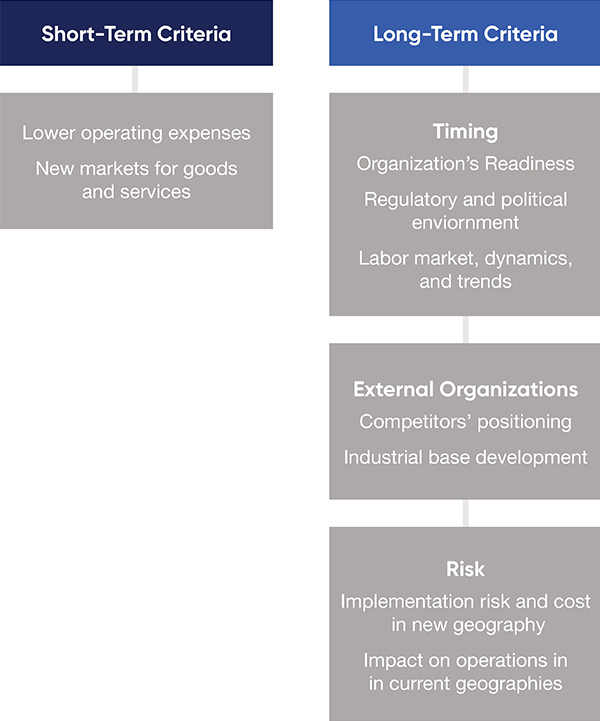Organizations that choose operational locations based primarily on low costs and promising markets for goods services often overlook critical factors that impact long-term success and failure.
Labor arbitrage (the practice of seeking the lowest-cost workforce) and the pursuit of promising markets for an organization’s goods and services drive most geographic strategies. Many times, however, the allure of these two opportunity types results in incomplete planning. While the organization believes it is acting in its long-term benefit – pointing to the sustained advantages of lower operating expenses and greater market access – in reality, however, it is overlooking critical factors that impact long-term success and failure. Juan Alcácer, an Associate Professor Harvard Business School, described the issue this way:
“The decision to expand is sometimes driven by the wrong reasons. In many cases companies are not thinking of the long-term consequences of what they are doing… You should not only think about whether there’s a market there or cheaper labor. You also have to think about what your competitors are doing, whether it’s the right time to enter or exit that location. Reducing your costs might not provide you with a competitive advantage at all.”¹
Geographic strategy criteria should most certainly include opportunities to reduce costs and grow the market for an organization’s goods or services. But to expand the planning into a long-term framework, other criteria need to also be considered. Prof. Alcácer mentioned two: competitors’ positioning and timing. Our graphic below redefines and expands these criteria into timing, external organization, and risk criteria categories.

Framework for Geographic Strategy: In many cases companies are not thinking of the "long-term consequences of what they are doing... you also have to think about what your competitors are doing, whether it's the right time to enter or exit that location."